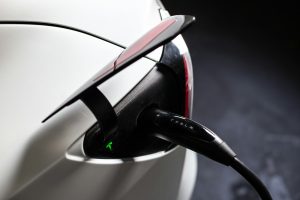The electric vehicle (EV) revolution has been hailed as a crucial step toward a greener future, promising reduced emissions and a cleaner environment. However, amidst the enthusiasm for EVs, a critical aspect often gets overlooked — the environmental impact of their batteries. Contrary to popular belief, these batteries are not emission-free, and the narrative surrounding the ecological benefits of EVs might be more complex than portrayed.
The Myth of Emission-Free Batteries
EVs have gained traction as eco-friendly alternatives to traditional combustion engine vehicles, primarily due to their lack of tailpipe emissions. Yet, producing and disposing of these vehicles’ batteries have significant environmental implications. Most EVs use lithium-ion batteries, which require substantial energy and resources to manufacture.
The extraction of raw materials for these batteries, including lithium, cobalt, and nickel, often involves environmentally damaging processes. Mining operations can destroy habitat, cause water pollution, and adversely affect local communities. Moreover, the energy-intensive manufacturing process contributes to greenhouse gas emissions, undermining the notion of emission-free EVs right from their inception.
Exploring Charles’ Perspective
Charles’ article on Tesla’s EV batteries sheds light on the less-discussed aspects of these vehicles. His insights highlight the environmental trade-offs involved in the production and disposal of EV batteries, urging readers to consider a more holistic view of their impact. Charles emphasizes the need for battery technology and infrastructure advancements to address the environmental challenges associated with EVs.
In his thoughts, Charles Mizrahi Forever Battery delves into the environmental complexities surrounding Tesla’s EV batteries and challenges the prevailing notion of their ecological cleanliness.
The Lifecycle Impact of EV Batteries
While EV proponents emphasize the zero-emission benefits during vehicle operation, the lifecycle analysis paints a more nuanced picture. A study by researchers revealed that the environmental impact of EVs heavily depends on the source of electricity used for charging. In regions where electricity is predominantly generated from fossil fuels, the overall ecological footprint of EVs can be comparable to that of conventional vehicles.
Additionally, the disposal and recycling of EV batteries pose challenges. These batteries degrade over time, losing their efficiency and storage capacity. The recycling infrastructure for lithium-ion batteries is still in its nascent stages, leading to concerns about the accumulation of electronic waste and potential environmental hazards from improper disposal.
Dispelling Misconceptions
Amidst the narrative of EVs as saviors of the environment, it’s crucial to address the misconceptions surrounding their impact. The reality is that while EVs offer promise in reducing tailpipe emissions, they are full of environmental costs. Acknowledging these complexities is essential in fostering a more honest conversation about the role of EVs in mitigating climate change.
Moving Toward Sustainability
Recognizing the environmental impact of EV batteries doesn’t negate the potential benefits of transitioning to electric vehicles. Instead, it underscores the need for innovation and sustainable practices within the EV industry. Advancements in battery technology, such as developing more efficient and recyclable batteries, promise to mitigate environmental concerns associated with EVs.
Moreover, transitioning toward renewable energy sources for electricity generation can significantly enhance the environmental credentials of EVs. By harnessing solar, wind, and other clean energy sources for charging EVs, the overall carbon footprint can be reduced, amplifying the environmental benefits of these vehicles.
A Balanced Perspective
The allure of EVs as environmentally friendly vehicles should be viewed through a lens of realism. While they offer the potential to reduce emissions during operation, the environmental impact of their batteries necessitates a more nuanced understanding. Addressing the challenges associated with EV batteries requires concerted efforts from manufacturers, policymakers, and consumers alike.
Charles’ article on the realities of EV batteries invites readers to reevaluate the narrative surrounding these vehicles. It encourages a balanced perspective that acknowledges EVs’ promise and environmental challenges. Embracing innovation, sustainable practices, and a collective commitment to reducing the ecological footprint of EVs can pave the way for a greener future in transportation.








